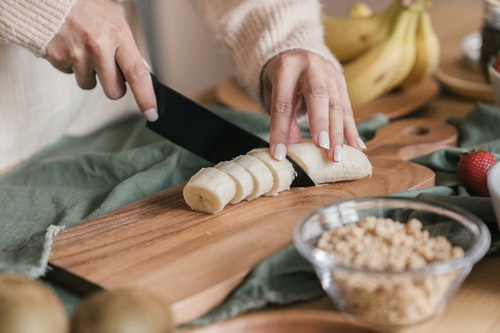
Introduction
Are you struggling with a rusty knife blade? Don’t worry! Cleaning a rusty knife isn’t only easy but also essential for maintaining its longevity and performance. In this article, we will explore various methods on how to clean a rusty knife blade effectively. By the end, you’ll be equipped with the knowledge to keep your knives in pristine condition.

What Causes Knife Blades to Rust?
Rust on knife blades is usually due to prolonged exposure to moisture and lack of proper care. Factors like humidity, improper storage, and low-quality materials can accelerate the rusting process. Therefore, understanding these factors is crucial in preventing rust formation.

Materials You’ll Need
Before diving into the cleaning techniques, gather the following items:
- Sandpaper (medium and fine grit)
- Steel wool
- Baking soda
- White vinegar
- Lemon juice and salt
- Soft cloth
- Protective gloves
These materials are readily available and will help you efficiently remove rust from your knife blades.

Immediate Actions for Minor Rust Spots
If you notice small rust spots on your knife, it’s important to act quickly. Here’s what you can do:
Using Baking Soda Paste
Mix baking soda with a little water to form a thick paste. Apply it to the rusty spots and scrub gently with a soft cloth or an old toothbrush. Rinse well with water and dry the knife thoroughly to prevent further rusting.
Using White Vinegar
Soak a paper towel or cloth in white vinegar and wrap it around the rusty blade. Let it sit for an hour. Remove the cloth and scrub with a sponge or steel wool. Rinse the knife with water and dry it immediately.
Tackling Severe Rust: Step-by-Step Methods
Sandpaper Method
For heavy rust, sandpaper is a reliable solution:
- Start with medium grit sandpaper to remove the bulk of the rust.
- Transition to fine grit sandpaper to smooth the blade surface.
- Finish with a soft cloth to wipe away debris.
Steel Wool Technique
Steel wool can effectively remove embedded rust:
- Wear protective gloves to avoid injury.
- Scrub the rusty areas with steel wool in a circular motion.
- Rinse the knife with water and dry it completely.
Using Lemon Juice and Salt
The acidity in lemon juice combined with salt can dissolve rust effectively:
- Cover the rusty blade with a layer of salt.
- Squeeze lemon juice over the salt.
- Let it sit for two hours.
- Scrub the blade with a gentle brush or cloth.
- Rinse and dry the knife.
Preventing Future Rust Formation
Prevention is always better than cure. Here are steps to prevent rust on your knife blade:
Regular Cleaning
Clean your knives immediately after use, and ensure they’re thoroughly dried before storing.
Proper Storage
Store knives in a dry place, preferably in a knife block or magnetic strip to avoid moisture contact.
Using Knife Oil
Apply a thin layer of knife oil to the blade to provide a protective barrier against moisture.
Frequently Asked Questions (FAQs)
1. Can I use regular household cleaners to remove rust?
Yes, some household items like vinegar and baking soda are effective for removing rust from knives.
2. Is it safe to use a rusty knife?
No, rust can compromise the blade’s strength and pose a health risk. Clean your knives regularly to keep them rust-free.
3. How often should I clean my knife to prevent rust?
Regular cleaning after each use and thorough drying can help prevent rust. Apply oil if you notice any signs of rust formation.
For more information on knife care and maintenance, visit Knife Maintenance Guide.
As an Amazon Associate, I earn from qualifying purchases.


